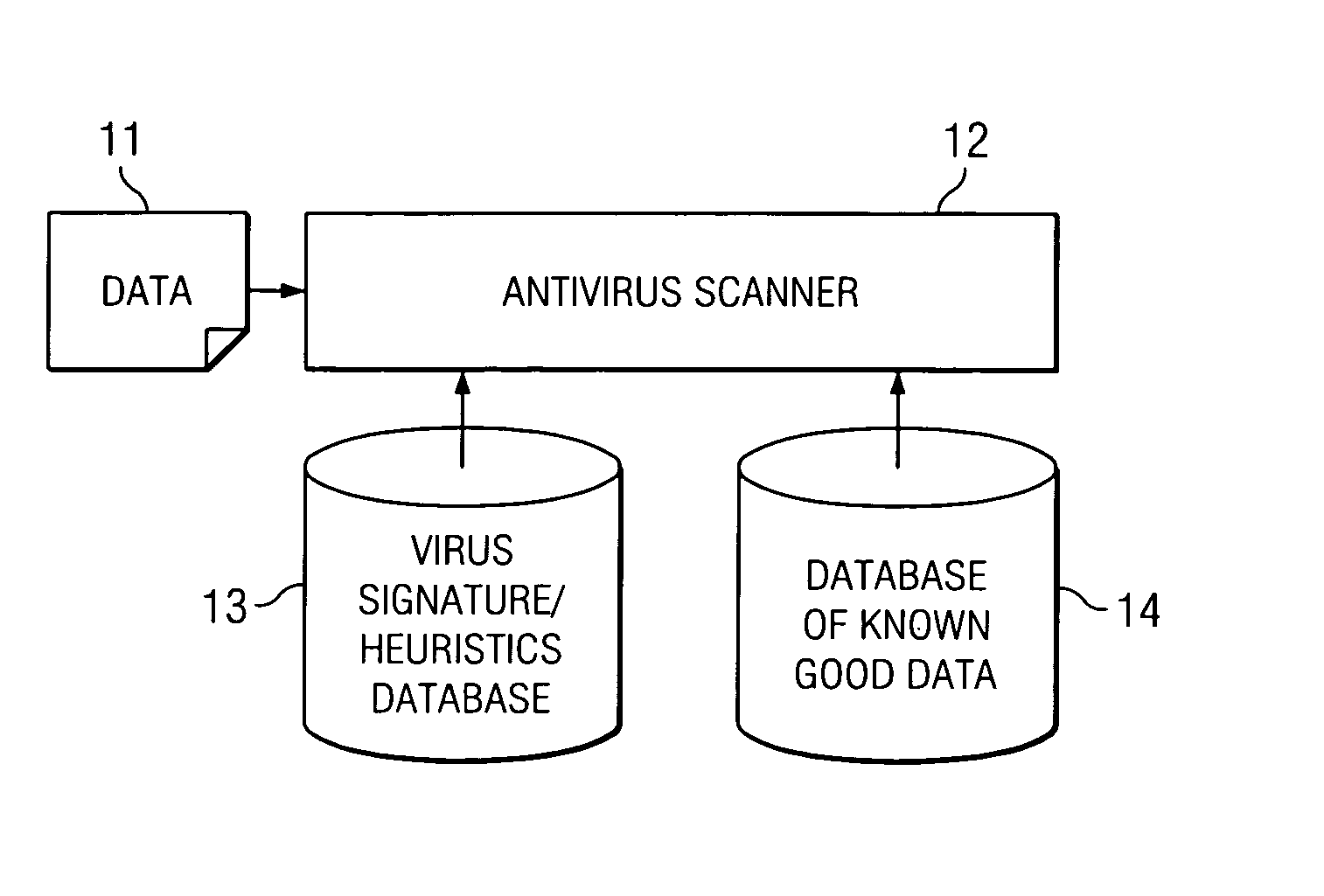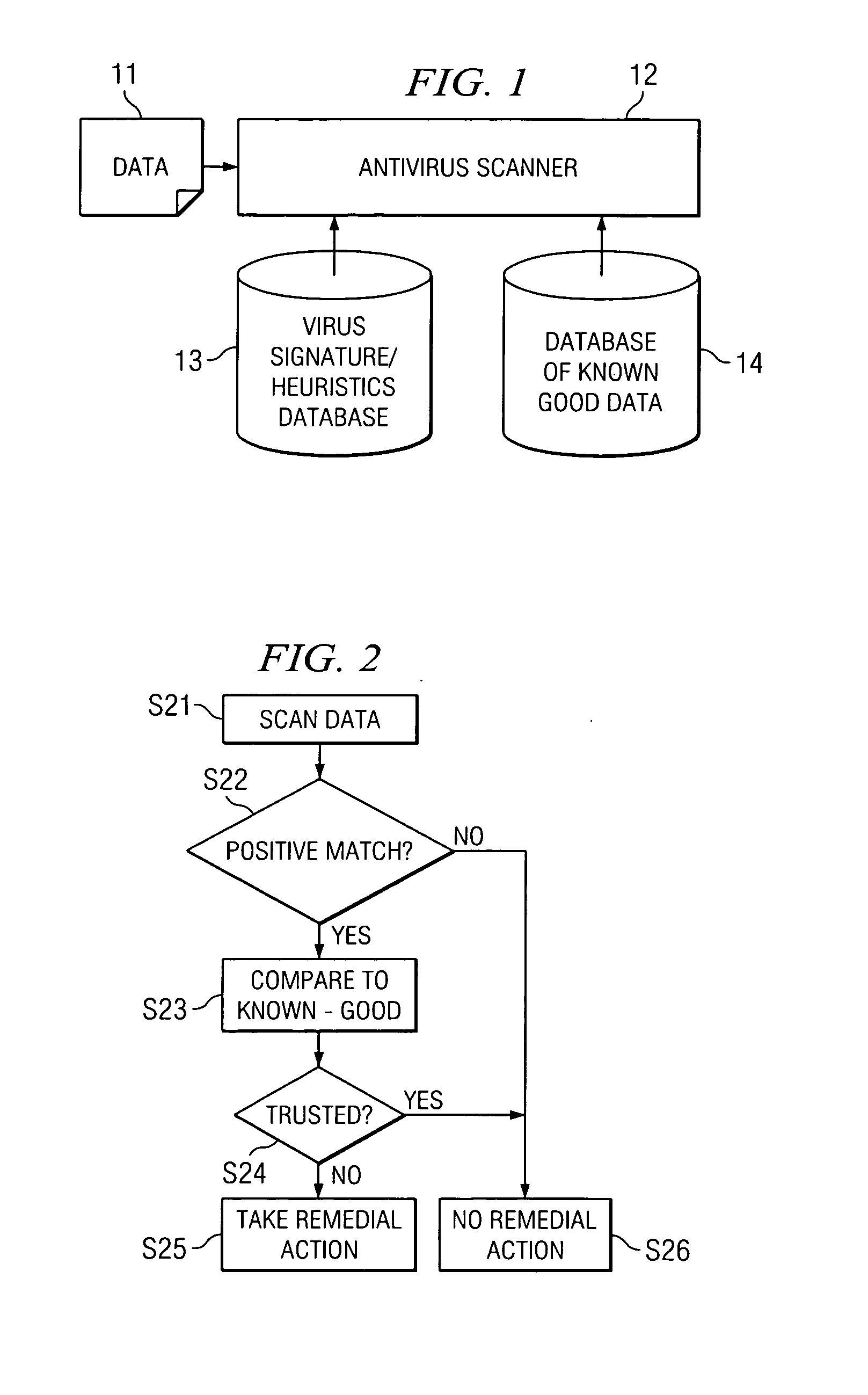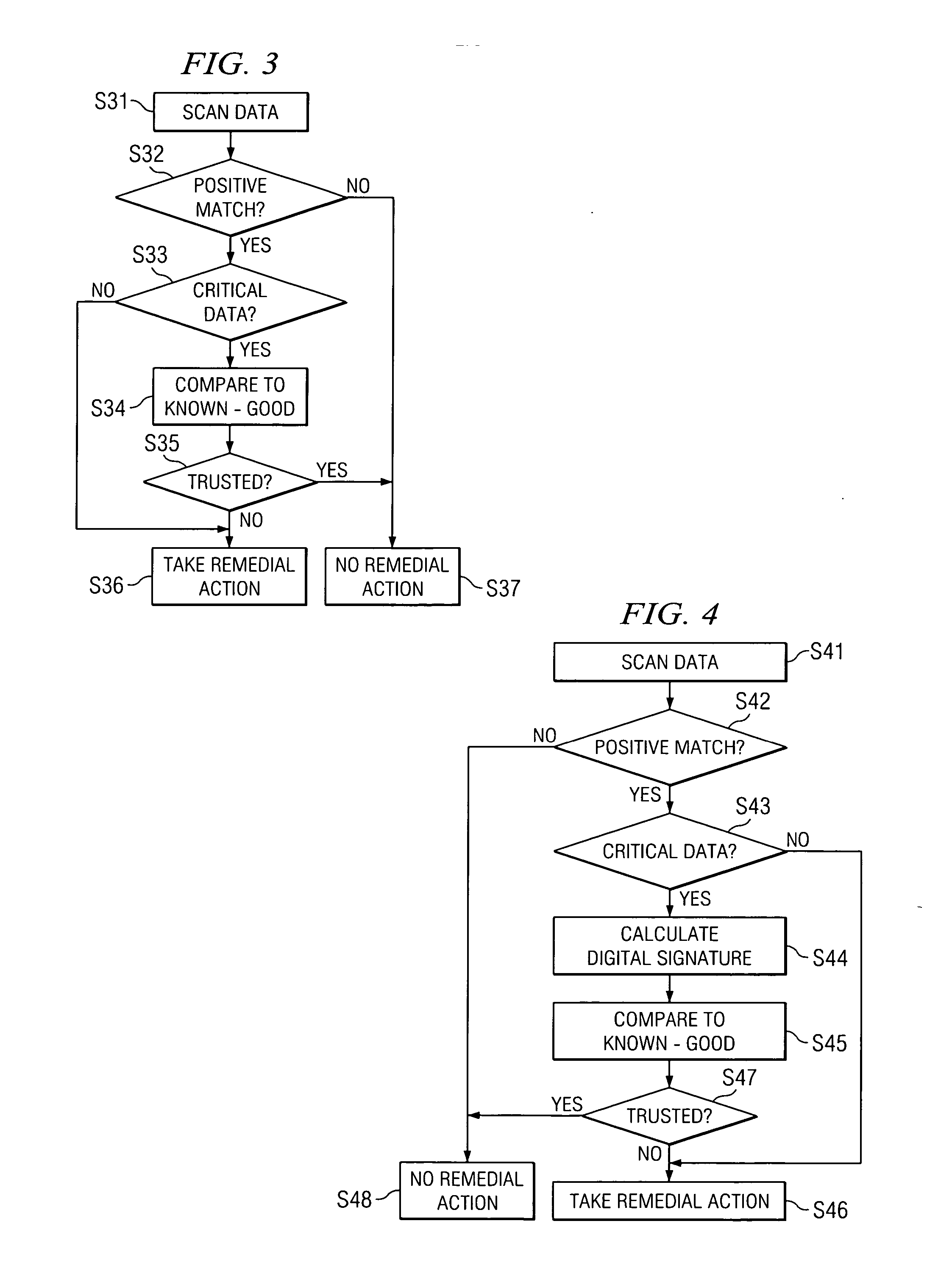System and method for reducing antivirus false positives
a technology of antivirus and false positives, applied in the field of antivirus protection, can solve the problems of increasing the threat of false positive results, affecting the security and utility of computer systems, and affecting the security of computer systems and other electronic technologies, so as to reduce the number of false positive results and reduce disruptions
- Summary
- Abstract
- Description
- Claims
- Application Information
AI Technical Summary
Benefits of technology
Problems solved by technology
Method used
Image
Examples
Embodiment Construction
[0022] In describing the preferred embodiments of the present disclosure illustrated in the drawings, specific terminology is employed for sake of clarity. However, the present disclosure is not intended to be limited to the specific terminology so selected, and it is to be understood that each specific element includes all technical equivalents which operate in a similar manner.
[0023] To reduce the frequency of false positives in antivirus programs and anti-spyware programs, particular embodiments of the present disclosure may seek to verify that potential malicious programs, for example an executable file that has matched a virus signature, are not actually clean files (files that are free of malicious program infection) before remedial action is taken. By verifying that a positive detection of a malicious program is not a false positive, false positives may be reduced and the harmful effects of unwarranted remedial measures may be avoided.
[0024]FIG. 1 is a block diagram illustr...
PUM
 Login to View More
Login to View More Abstract
Description
Claims
Application Information
 Login to View More
Login to View More - R&D
- Intellectual Property
- Life Sciences
- Materials
- Tech Scout
- Unparalleled Data Quality
- Higher Quality Content
- 60% Fewer Hallucinations
Browse by: Latest US Patents, China's latest patents, Technical Efficacy Thesaurus, Application Domain, Technology Topic, Popular Technical Reports.
© 2025 PatSnap. All rights reserved.Legal|Privacy policy|Modern Slavery Act Transparency Statement|Sitemap|About US| Contact US: help@patsnap.com



